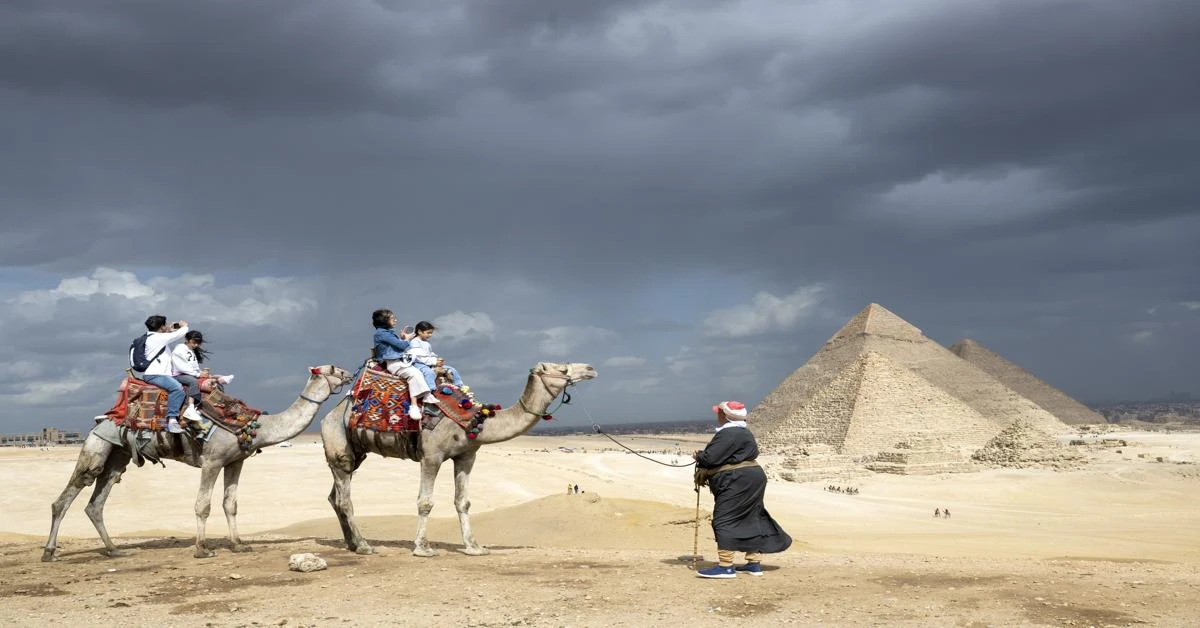Egypt’s pyramids attract 14.9 million tourists in 2023

Egypt earns most of its tourism revenues from tourists visiting the pyramids
Egypt, where the pyramids of Keops, Kefren and Mikerinos, the largest of about 160 pyramids built as burial places for the kings who lived during the 4th Pharaonic Dynasty (3494 B.C. – 2613 B.C.), were visited by 14.9 million tourists in 2023.
The pyramids, named after the kings of the period, are located in the city of Giza, southwest of the capital Cairo, as the tombs of fathers, sons and grandsons, including the largest pyramid Keops (King Khufu), the middle pyramid Kefren (King Khafre) and the small pyramid Mikerinos (King Mnkaure).
Keops, which remained the tallest structure in the world for nearly 4,000 years after its construction until the Eiffel Tower was built, was 230 meters wide and 146.4 meters tall, but over time, erosion shortened it by about 10 meters.
Keops is considered the largest and oldest of the pyramids in Egypt.
Keops, among the Seven Wonders of the World, is the only structure among these works that has survived to the present day.
Built for himself by King Khufu of the 4th Pharaonic Dynasty, the pyramid of Keops was built from limestone, each weighing thousands of kilograms. It is estimated that the construction of Keops, comprising approximately 2.3 million stone blocks, took 20 years, with 800 tons of stone being placed daily.
The king’s burial chamber inside the pyramid of Keops is made of granite stones, estimated to have been brought by ships from Aswan, Egypt, across the Nile River.
The pyramid of Kefren, the second largest pyramid in Giza, is estimated to have been built by Kefren’s son Mikerinos.
It is seen that the protective coating on the top of Kefren, which is 143.5 meters tall, has survived to the present day.
The pyramid differs from the others in this respect. Inside the pyramid, which has two entrances, is a king’s room under the ground and a queen’s room at the top. At the top of the pyramid is a protective stone weighing 36 tons.
Mikerinos, the smallest of the Giza pyramids, is 65.5 meters high. This pyramid was finished by his son Shepseskaf after Mikerinos died.
The Giza Sphinx thought to have been built to protect the pyramids, is also known as the most giant single-stone statue in the world.
The face of the sphinx is believed to belong to King Kefren.
Around the centuries-old pyramids built for father, son and grandson, there are small pyramids for queens and the rest of the family members to be mummified and buried. There are also two temples built around the pyramids for funerals and rituals.
In ancient Egypt, where the belief in resurrection after death was dominant, kings were mummified and buried with jewelry to prevent their bodies from decomposing.
Although hundreds of years have passed since their deaths, the mummification method that prevented the bodies of kings from decaying remains a mystery.
The famous 17th-century traveler Evliya Celebi mentions the Egyptian pyramids in his Seyahatname.
Visited by 14.9 million tourists last year, Egypt earns most of its tourism revenues from tourists visiting the pyramids.
The pyramids attract tourists annually and significantly contribute to the country’s economy.
Source: AA



